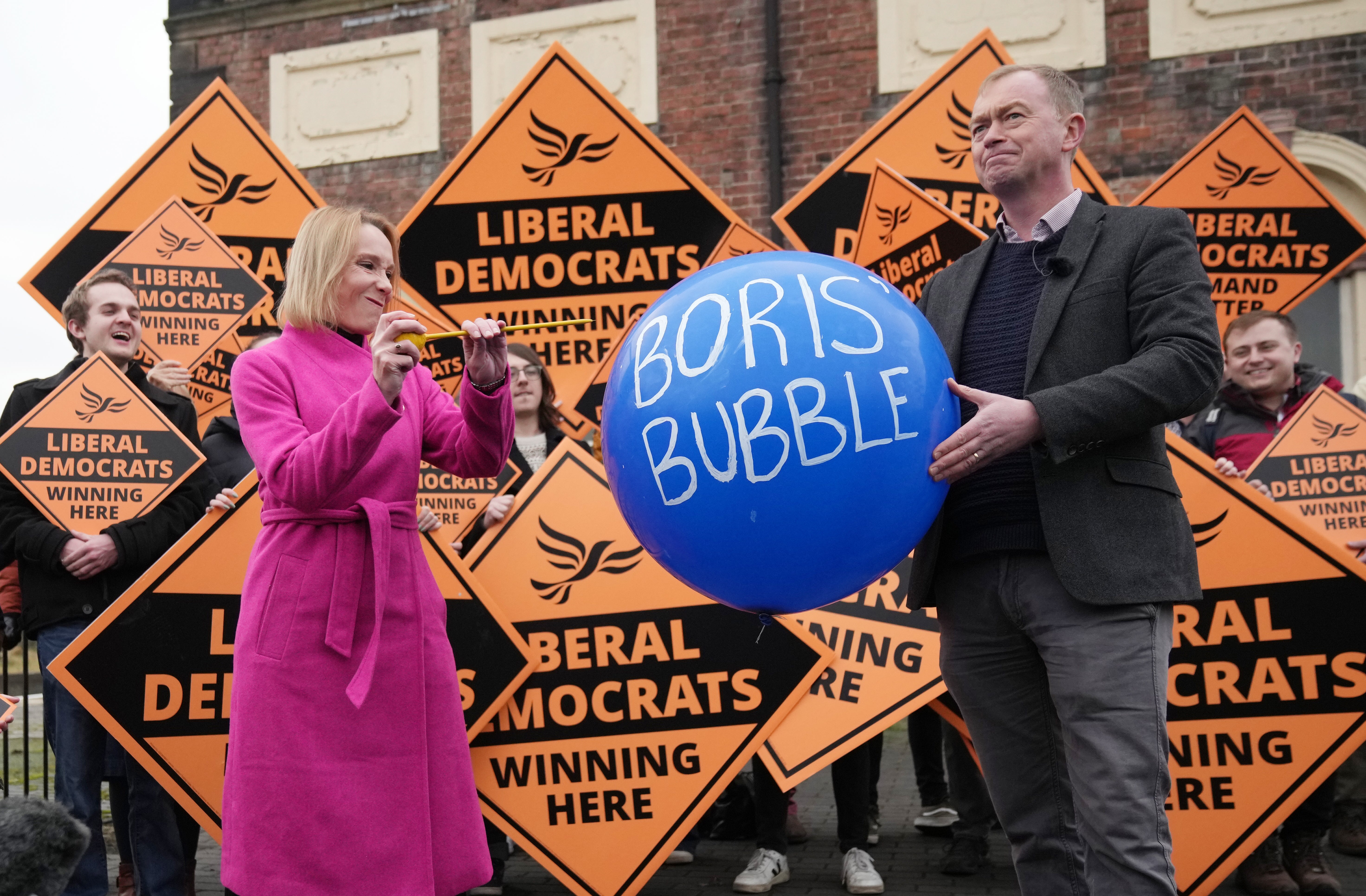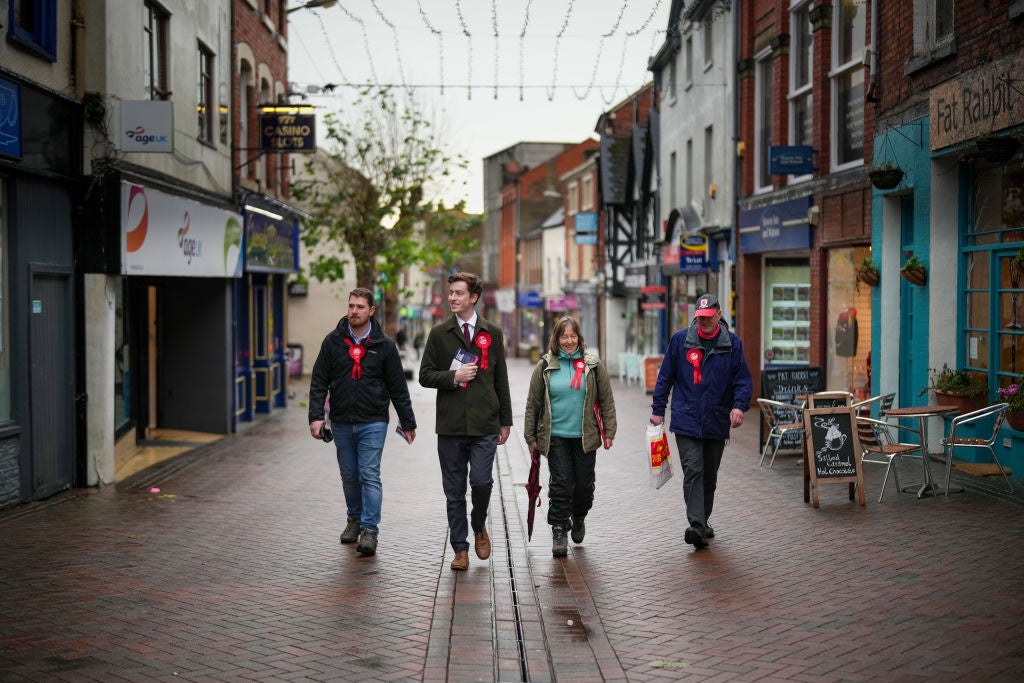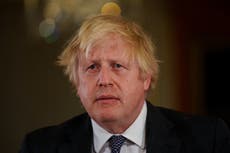The North Shropshire by-election was also about being neglected
This was about more than Christmas parties – this Tory stronghold felt undervalued and overlooked, writes Chris Blackhurst


One of the messages that came out of the shock North Shropshire byelection result was neglect.
On the face of it here was a relatively prosperous area, north of Shrewsbury, south of Chester and Wrexham, a rural, farming community centred on five market towns. But those towns of Oswestry, Market Drayton, Ellesmere, Wem and Whitchurch signalled “enough”.
Sure, there were questions over the Downing Street parties in defiance of lockdown and rumblings about the new Covid restrictions, but the opposition parties were already playing heavily to a sense of people in this hitherto Tory stronghold of feeling undervalued and overlooked.
Both the Liberal Democrats and Labour promoted the notion of Conservative voters being taken for granted and pointed to “levelling-up” funding going to formerly rock-solid Labour “red wall” areas in the Midlands and northern England, rather than North Shropshire.
This should ring alarm bells for the Tory managers. For if the residents of this seemingly well-heeled constituency are fed up, what does it show, what does it mean for other constituencies that are outside Boris Johnson’s great rebalancing drive and were previously regarded as guaranteed blue?
Of course, one snap localised election does not make a national turnaround. We’re mid-term and voters in by-elections traditionally revel at the chance of giving the ruling party a good kicking. Nevertheless, the underlying theme of dissatisfaction should give pause. If places like this are unloved what does that say for elsewhere?
Critical to that mood I suggest, is the belief that a way of life is changing – and not for the better. With that shift has come a loss of control, an erosion of optimism that contributed heavily to this upset. Central to that is the decline in our town centres.
This is occurring everywhere. The move to out-of-town shopping centres, the rise of online retail and onerous business rates have clobbered our high streets
Just because they are market towns – it’s a phrase that instantly conjures up bustling squares and pavements, colourful time-honoured scenes of crowded stalls and buzzing shops and hostelries – does not mean they are immune. What goes through people’s minds when they vote is their own circumstances, their wellbeing, finances, security. That’s followed by where they live, what’s it like. The mental picture they paint is good or bad or so-so, improving, worsening or staying the same.
If they see empty and closed shops, and stores they once regarded as favourites replaced by charity outlets, coffee bars and nail parlours, they form a view. That further hardens when they consider the workers that have gone, the jobs that have been lost, not to be recreated.
I’ve written about the decimation being wrought upon our high streets before and I make no apology for doing so again – to my mind it is up there with the environment and inequality as one of the great problems of our age. And ministers are doing precious little about it.
At stake is potential unemployment on a vast scale and the prospect of our town centres becoming “doughnuts”, abandoned and desolate.
This is occurring everywhere. The move to out-of-town shopping centres, the rise of online retail and onerous business rates have clobbered our high streets. They are the main factors – to them can be added parking charges and poor public transport. The pandemic has accelerated the fall – thousands of shops and businesses, small and large, have struggled to survive and come the new year, with the onset of Omicron, more will go under.

It’s not all gloom. The Government has poured some money in – nowhere near sufficient – and business owners and shop owners have battened down and are determined to stay the course, and have displayed a readiness to adapt and to diversify.
Council, too, are stepping up. The District Councils’ Network (DCN) says: “This isn’t just a matter of protecting and growing jobs. It’s about restoring town centres as beacons of local pride. At its heart, regeneration is about creating places that will attract people to live in, work in and visit. Building on the traditions and history of our towns but reimagining them for the 21st century.”
It cites several locations as paving the way:
– Stevenage, one of the first new towns and currently celebrating its 75th anniversary, is investing almost £40m to revive its town centre
– In Eastbourne, the council is delivering a £20m investment to create a vibrant and pedestrianised cultural district with urban art and al fresco dining, powered with green energy, and creating a pedestrianised walkway from the town centre to the seafront
– In Leamington Spa a £10m regeneration scheme will tackle the steady decline in retail, working with private and public sector partners to transform structurally significant, under-utilised locations along the high street north and south of the river

– Craven District Council is investing almost £7m in Skipton to create a cultural hub and “Heritage Action Zone” to boost the night-time economy and attract younger people to the town.
These are long-term examples. In the short-term, conditions remain tough. High streets and town centres saw a 50 per cent drop in footfall last December, at what is traditionally the busiest time of year for small businesses. This Christmas, just as conditions were improving along came the new variant and the “Plan B” measures.
Again, the DCN lists:
– South Staffordshire for spearheading press campaigns, facilitating Christmas fairs, and street adaptations, and releasing coveted “shop local” South Staffordshire canvas shopping bags
– Gedling Borough has launched its #Rediscover campaign to promote local businesses and encourage residents to shop locally this Christmas, including a new webpage and online advent calendar for local businesses
– Hinckley is one of many councils to have organised Christmas lights events, attracting over 16,000 visitors. There, footfall increased by 90 per cent. Hinckley also instigated a “High Street Helpers” programme, distributing advice and over 6,000 health brochures, along with 2,500 lateral flow kits a week.
Says the DCN: “On the face of it the move to Plan B spells bad news for the economy. But there are silver linings. As many more people find themselves working from home, councils are encouraging them to rediscover their local high streets over this festive period. A rise in people shopping locally will be a big boost to many small businesses who have felt the pinch over the pandemic.”
It is small beer compared with the scale of the crisis engulfing our shopping streets. But it’s a start. Much, much more needs to be done. As they digest the disaster of North Shropshire, Johnson and his colleagues will realise that the whole country, market towns included, is suffering. Hopefully, they will wake up to what is occurring all over the country and finally, we may see the long overdue imposition of an online sales tax and reform of business rates.
Join our commenting forum
Join thought-provoking conversations, follow other Independent readers and see their replies
Comments



Bookmark popover
Removed from bookmarks